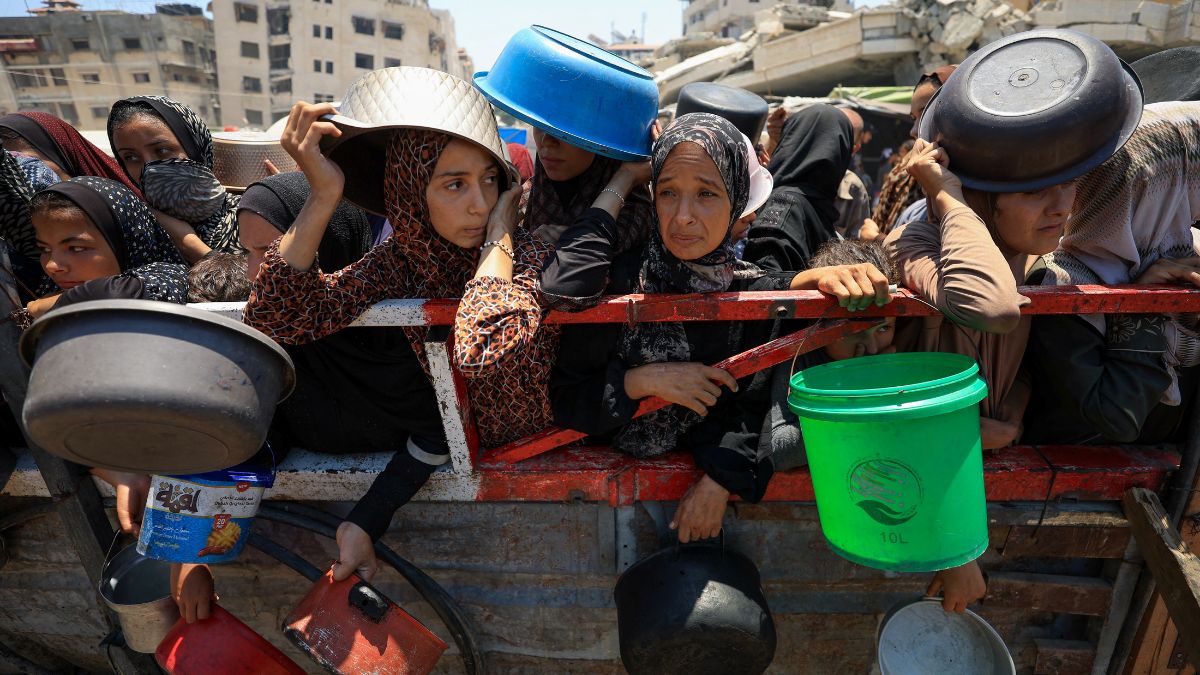In a rare rebuke, an Israeli analyst has said that Israel’s localised ceasefires put in place over the weekend shows that the strategy so far in the war has failed.
Israel on Sunday announced that it had implemented localised ceasefires for the flow of humanitarian supplies. These ceasefires have been implemented in the Al-Muwasi area in central-southern Gaza’s coastal areas, Deir al-Balah in central Gaza, and Gaza City in northern Gaza, according to The Jerusalem Post.
Even though these areas account for just 25 per cent of Gaza, nearly the entire population of the Palestinian enclave is living in this area as it has been displaced by the ongoing war between Israel and Hamas.
The Israeli localised ceasefires have come as international condemnation of the Israeli policy of restricting the flow of food and other essentials to Gaza has risen by the day. Palestinians are facing acute hunger and the United Nations (UN) has said that the level is such that one in every five children is affected by malnutrition. The situation is such that even US President Donald Trump has broken ranks with Israel and flagged the hunger crisis affecting the children of Gaza.
During March and May, Israel completely blocked the UN and other organisations from delivering aid to Gaza. Instead, the Netanyahu government joined hands with the United States to prop a private organisation, Gaza Humanitarian Foundation (GHF), to deliver aid. The GHF has not just failed in its mandate because of its inability to deliver food at scale, but its delivery sites had turned into killing fields as hundreds of Palestinians have been killed in gunfire while awaiting aid at distribution sites. Gazans have attributed such fire to Israeli forces.
Impact Shorts
More ShortsAmid such a situation, Israeli analyst Yonah Jeremy Bob has noted that even as Israel maintains there is no starvation, “the brutal truth is that the IDF [Israel Defense Forces] admits there is a dangerous food situation in Gaza, even if short of the claimed mass starvation, and an awful public-relations situation there — all of this because of several Israeli policies that some in the defence establishment warned about but that were overruled by the political echelon”.
Netanyahu ignored ex-Israeli military chief, defence minister & botched aid operation
In an article in The Jerusalem Post, Bob said that policies implemented by Netanyahu by ignoring the advice of former IDF chief Herzi Halevi and former Defence Minister Yoav Gallant have led to the present crisis.
Bob said that Halevi and Gallant had suggested that the a GHF-like operation should have been implemented initially at a very small scale while the UN and other organisations were still active in Gaza. He said that such a mechanism would have allowed GHF’s shortcomings in the delivery of food to be fulfilled by the UN and others and, at the same, allow the GHF to finetune its delivery system and get ready for a subsequent bigger role.
Bob noted, “Before taking larger responsibility for a larger number of Palestinians, a smaller-scale GHF-style experiment to test its potential would have been able to work through some of the issues in building a radical new and untested non-UN alternative to providing food aid. Also, this would have happened in a time period when the Palestinians had relatively more food saved in inventory storage areas, i.e., if there were hiccups with a few food deliveries, the Palestinian civilian population would not be in any immediate danger.
“In contrast, the current Israeli policy since March was to loudly and proudly block all new food aid until May to try to pressure Hamas, and then open GHF in a framework when Palestinian civilians were already at one of the worst food shortages of the war (even if not at a point of mass starvation).”
With the current ceasefires, Bob noted that neither food crisis was being addressed nor the war on Hamas.
“Israel is also providing a ’localised’ ceasefire and trying to present this as a non-ceasefire, which only covers 25 per cent of Gaza. But for the food to get to that 25 per cent, a much larger portion of Gaza will need to be under ceasefire status – maybe even the majority of Gaza. Moreover, all or nearly all of the Hamas terrorists are hiding in the 25 per cent of humanitarian areas where the ’localised’ ceasefire is holding securely in place, and some of their smaller numbers in other places can now make their way to those areas to obtain immunity,” noted Bob.
)